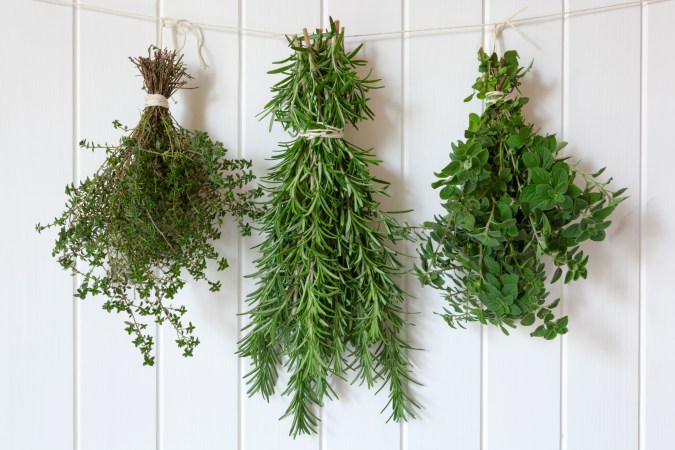

You’re feeling proud of yourself: you finally did the responsible thing and brought home a load of fruits and vegetables. But when you go to harvest the bounty in your fridge, it’s a slimy, wilted, brown mess.
If you’re tired of your produce going bad after a few days, here are a few tips to keep it fresh.
Shop smart
Keeping produce fresh starts with, well, buying fresh produce in the first place. The fresher it is when you grab it off the shelf, the longer it’ll last once you take it home.
“Often, it’s difficult to judge how old your produce is just by its appearance,” says Jeffrey K. Brecht, Ph.D., a postharvest physiologist at the University of Florida. “So, a big factor in how long it lasts in the refrigerator has to do with how long it has been since it was harvested, and how it was treated during that time.”
You might think local produce is your best bet, but don’t rush to the farmers market just yet.
“Produce at farmers markets are closer to the farm in terms of distance and time from harvest, but farmers market produce is not usually handled with proper temperature management, so it can be less fresh than chain grocery store produce,” Brecht says. “Was it refrigerated after harvest and kept in a cooler? Displayed in the shade? Is it in plastic bags? Those practices help prevent loss of freshness.”
So before you grab the first head of cabbage you see, ask the vendor how the products were stored and handled. Once you find a vendor you trust, stick with them.
Finally, planning your meals ahead of time—and shopping accordingly—can ensure you eat food when it’s at its peak. I highly recommend using an app like Paprika to plan out your week, scheduling meals with fresher ingredients for soon after you go grocery shopping. That way, those ingredients get used first.
RELATED: Healthy food prescriptions could save billions in healthcare costs
If you’re the type of person who goes to the grocery store twice a week (as many people do), you can alternatively grab a second batch of fresh ingredients then. Whatever your preference, planning ahead is key.
Set your fridge’s temperature and humidity properly
Refrigeration is a magical thing, which is probably why humans have relied on it, in one form or another, for centuries. But if you come home from the grocery store and toss your food on any ol’ shelf without a second thought, you might be unintentionally shortening its usable lifespan.
The USDA says your refrigerator needs to be set below 40 degrees Fahrenheit to avoid foodborne illness, but Brecht recommends going a little lower for optimal freshness.
“Set the temperature in your refrigerator to about 36 degrees Fahrenheit—basically as low as you can without freezing the lettuce (which freezes at just below 32 degrees Fahrenheit),” he says. “The temperature fluctuates both above and below the set point, so you want it to be as low as possible without fluctuating below 32 degrees on the down cycle.”
If your fridge doesn’t have a built-in thermometer, consider buying an appliance thermometer to make sure the fridge is adhering to your desired temperature—not just in one spot, but throughout the whole thing, since the temperature can vary between compartments.
“Second, to reduce wilting and shriveling, use the crisper drawers,” Brecht says.
If you have multiple drawers, they may be intended for different types of food or have humidity sliders you can set. In general, you want one drawer set to high humidity and one set to low, with wilt-prone vegetables in the high-humidity drawer, and rot-prone produce such as apples and zucchini in low humidity.
Finally, some produce shouldn’t be stored in the fridge at all. Tomatoes, bananas, basil, mango, papaya, and other tropical fruits will lose quality when stored below room temperature, so leave those out on the counter for optimal freshness. Once you peel and slice them, though, they should go in the fridge for safety reasons.
When it comes to your freezer, zero degrees Fahrenheit will keep your food safe to eat almost indefinitely. Not all produce freezes well, though, so check out this good-but-not-exhaustive list of foods that will lose quality at freezing temperatures.
RELATED: Find the real breakfast of champions with this helpful chart
Storage is key
“I think more produce in home refrigerators reaches the limit of its acceptable quality due to water loss than anything else,” Brecht says.
So if your lettuce won’t stop wilting, your goal should be to keep its moisture level high. Leave your produce in the plastic bags they provide at the grocery store before placing it in the drawer, so moisture doesn’t escape. You can also place a moistened paper towel in the produce drawer to increase its relative humidity, Brecht says.
In addition, you’ll want to store certain produce closer (or farther away) from other fruits and vegetables to avoid over-ripening.
“As some fruits ripen, they produce ethylene, a gas that promotes both the ripening of those fruits plus aging of other fruits and vegetables,” Brecht says.
That includes apples, pears, avocados, bananas, kiwifruit, peaches, plums, and other ethylene-sensitive fruits, so you’ll want to keep those away from other produce to avoid damage. You can, however, use this to your advantage.
“You can use the ethylene produced by ripening fruits like apples, avocados or bananas to speed up the ripening of other ethylene-producing fruits by putting them together in a loosely closed bag or in a fruit ripening bowl,” Brecht says.
It can feel a bit like a logic puzzle getting all your fruits and vegetables in their optimal storage spots, but you’ll get the hang of it. At the end of the day, planning your meals and shopping with a purpose is the best thing you can do. The more work you can do up front, the less often you’ll be disappointed by another head of wilted lettuce.















